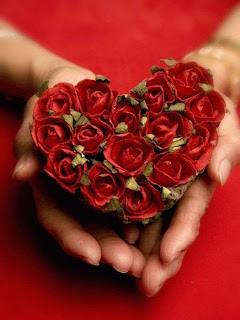 It’s February and love is in the air… Valentine’s day is just around the corner and many millions are looking for that perfect gift to show how they feel for their special someone. It is clear that much of the day’s meaning is lost to heavy commercialization. This year, American’s alone are expected to spend a total of $15.7 billion this Valentine’s Day; two of the most common items purchased are chocolate and flowers, two industries fraught with human rights violations, including slavery and child labor.
It’s February and love is in the air… Valentine’s day is just around the corner and many millions are looking for that perfect gift to show how they feel for their special someone. It is clear that much of the day’s meaning is lost to heavy commercialization. This year, American’s alone are expected to spend a total of $15.7 billion this Valentine’s Day; two of the most common items purchased are chocolate and flowers, two industries fraught with human rights violations, including slavery and child labor.
Chocolate: slavery’s bittersweet treat
Those sweet heart-shaped chocolate boxes often begin with a children enslaved to pick cocoa pods. UNICEF estimates that some 200,000 children are victims of trafficking each year in West and Central Africa alone, for the purpose of working in the supply chain of products such as cocoa and coffee. Child trafficking continues to plague the cocoa fields of West Africa, which is the source of 70% of the world’s cocoa. According to the International Labor Organization (ILO) there are an the estimated 215 million child laborers around the globe, and two-thirds of children aged 5-17 and work in agriculture. These children are placed in hazardous working conditions in order to ensure that we have our sweet treats, it is truly a bitter story.

Flowers: The stem of slavery
Valentine’s Day is a flower seller’s dream, but it is a daily nightmare of exploited workers, many of whom are women. Americans will buy more than 189 million stems of roses this Valentine’s Day, the majority of which will travel all the way from Ecuador and Colombia before they’re sold to doting beaus. According to the US Labor Education in the Americas (USLEAP), women comprise 65% of those working in the flower field, nearly a third are single mothers, working long hours (12-16) for around $2 or less per day. These slave-like wages leave young mothers unable to cover their families’ basic monthly expenses, while the flowers they picked that day will sell for between $600 and $800. Aside from the long workdays and impossible quotas, flower workers are exposed to high levels of toxic pesticides and fungicides, which are sometimes sprayed on workers bodies while they are in the field. This has left women flower workers with high rates of birth defects, miscarriage, and sterilization. These mothers often pass on the legacy of exploitation to their children as the cycle of slavery continues generation after generation.
How do you ensure your Valentine’s gifts are free from exploitation?
Become a conscious consumer and search for items labeled ‘Fair Trade’. Fair Trade works towards greater transparency in both industries and helps to ensure that workers in the fields receive a fair wadge and human rights protection. So buy Fair Trade, especially products known to be associated with worker exploitation. These include agricultural products like cocoa, coffee, coconuts, cotton, fruit and vegetables, jasmine, palm oil, rubber, sisal, sugar cane, tea, tobacco, and vanilla.
What is Fair Trade?
The Fair Trade label is applied to products that pass a standard certification system. In addition to agricultural consumables, Fair Trade versions of sports balls, clothing, rugs, and other products can be easily found. Fair trade certification empowers workers and communities to lift themselves out of poverty by investing in their farms/businesses and communities, protecting the environment, and developing the business skills necessary to compete in the global marketplace. Fair Trade is much more than a fair price, it enables safe working conditions, living wages for workers, prohibits forced child labor and slavery, promotes environmental sustainability, and encourages community development. However, please note that just because a product does not carry the label, it does not mean that it is not Fair Trade, as many smaller co-ops and others have not yet been able to afford the certification. Nonetheless, do not let this put you off, being a conscious consumer and knowing where your products come from is always a better way forward for everyone, so don’t be afraid to investigate and do some research. There are sites like Fair Trade Proof.org and the list on Fair Trade USA will help you find brands that sell Fair Trade Certified products to help you get started. I have also compiled a list of some Fair Trade and Slave Free Links and Shopping Fair Trade and Slave Free this Holiday Season. Please also see previous posts on Child Trafficking, Child Labor and Fair Trade.